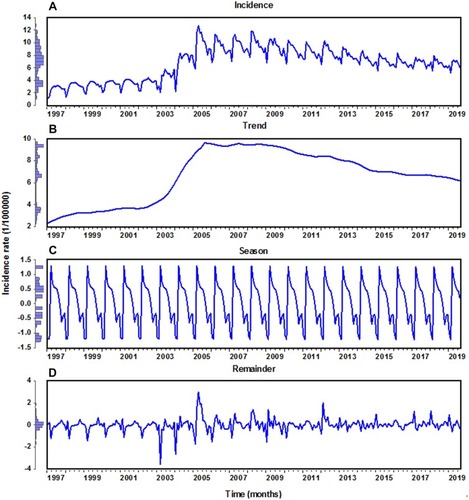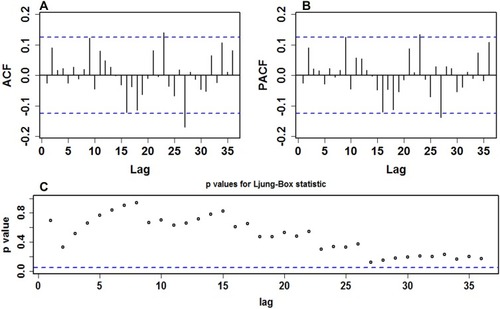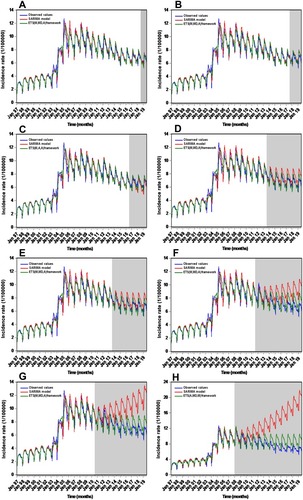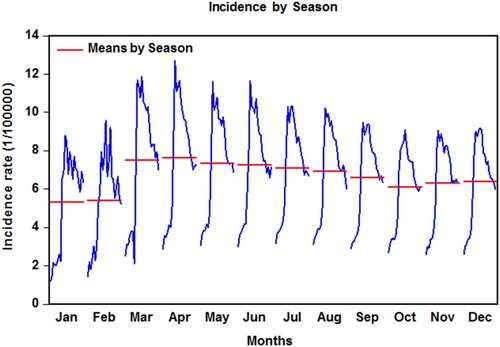Figures & data
Table 1 The 30 Alterative ETS Methods Associated with Various Combinations of Trend, Seasonality and Error
Figure 1 Joinpoint regression displaying the TB epidemic trends over the period 1997–2035. *Showed that the annual percent change (APC) is significantly different from zero at the significance level.

Figure 2 Time-series plot for the monthly TB incidence in China from January 1997 to August 2019 and the seasonal decomposition consisting of different components of the TB series with the STL method. (A) TB incidence time series; (B) trend component; (C) seasonal component; (D) irregular component.

Table 2 The Best-Performing SARIMA Models Obtained from Various Training Sets and Goodness of Fit Tests for Their Parameters
Figure 4 Goodness of fit test for the residuals generated by the SARIMA(0,1,(1,10))(0,1,1)12 approach established with the training data from January 1997 to August 2018. (A) Autocorrelation function (ACF); (B) partial autocorrelation function (PACF); (C) P values for Ljung–Box statistic. Almost all of correlation coefficients fell into the 95% uncertainty levels and all P values at different lags were greater than the significance level of 0.05, indicating that this approach showed a good adequacy for this series.

Figure 5 Comparative time series plots measuring the approximations to the hold-out data on different-step-ahead predictions using the SARIMA and ETS methods. (A) 12 data ahead forecasts; (B) 24 data ahead forecasts; (C) 36 data ahead forecasts; (D) 48 data ahead forecasts; (E) 72 data ahead forecasts; (F) 96 data ahead forecasts; (G) 108 data ahead forecasts; (H) 132 data ahead forecasts. In these plots, the shaded areas displayed the predictive results using the SARIMA and ETS models, suggesting that the ETS methods captured the dependent structures well, particularly for the long-term forecasting time steps.

Table 3 The Best-Performing ETS Models Obtained from Various Training Sets and Goodness of Fit Tests for Their Parameters
Table 4 Comparative Results of the Performances Between the Best-Undertaking SARIMA Methods and the Best-Undertaking ETS Methods on the Different Training and Testing Sets


